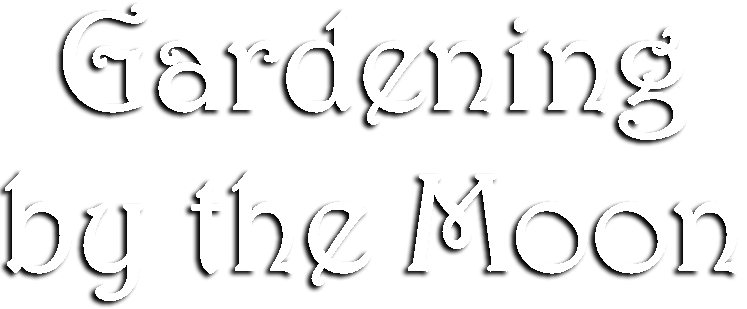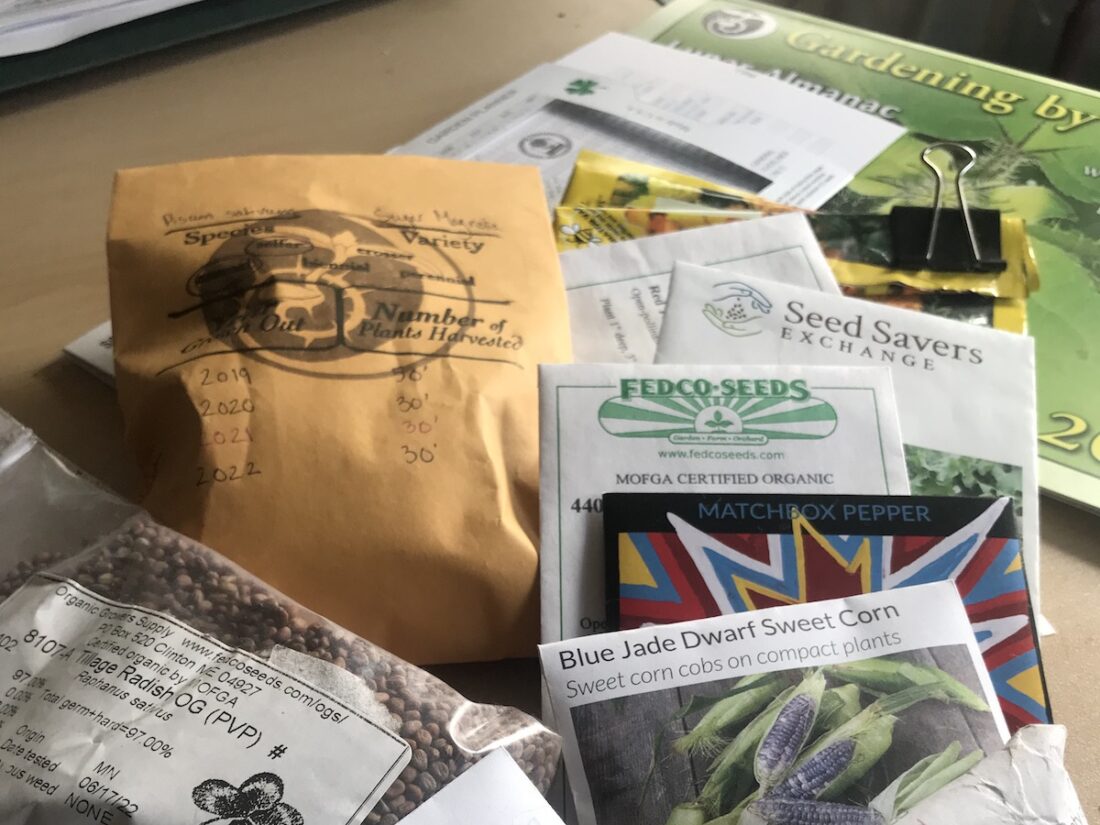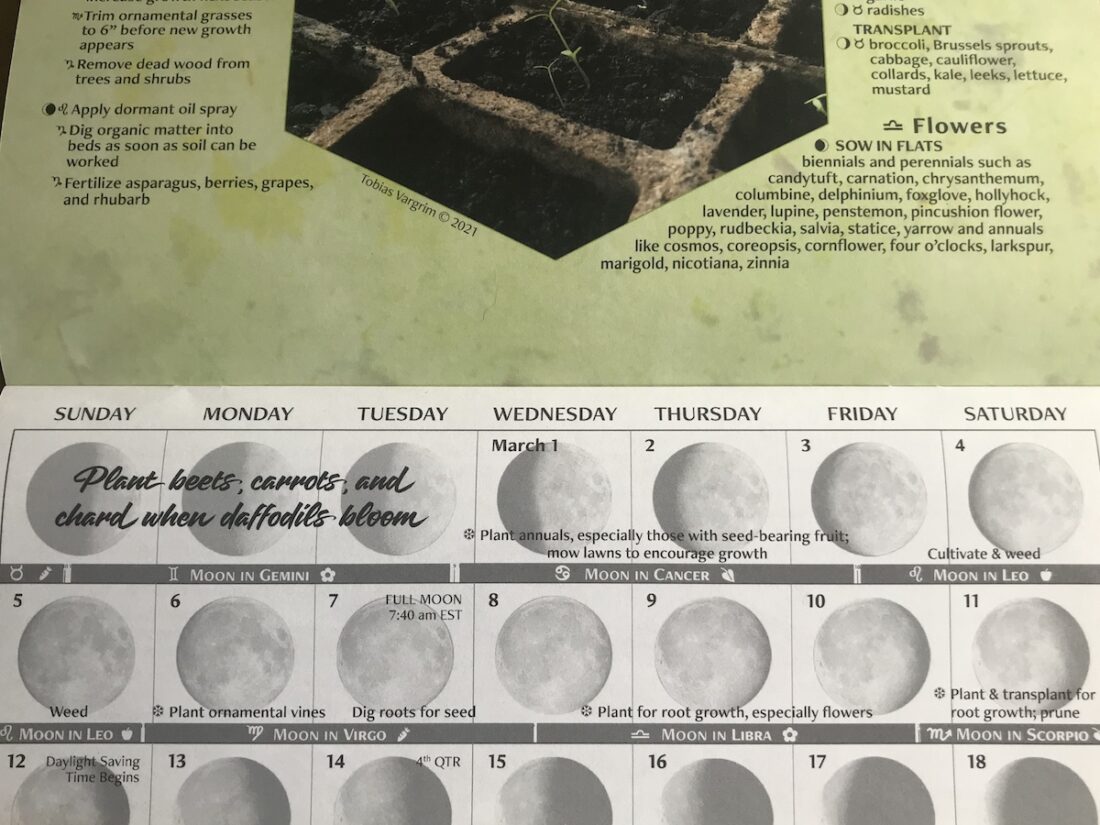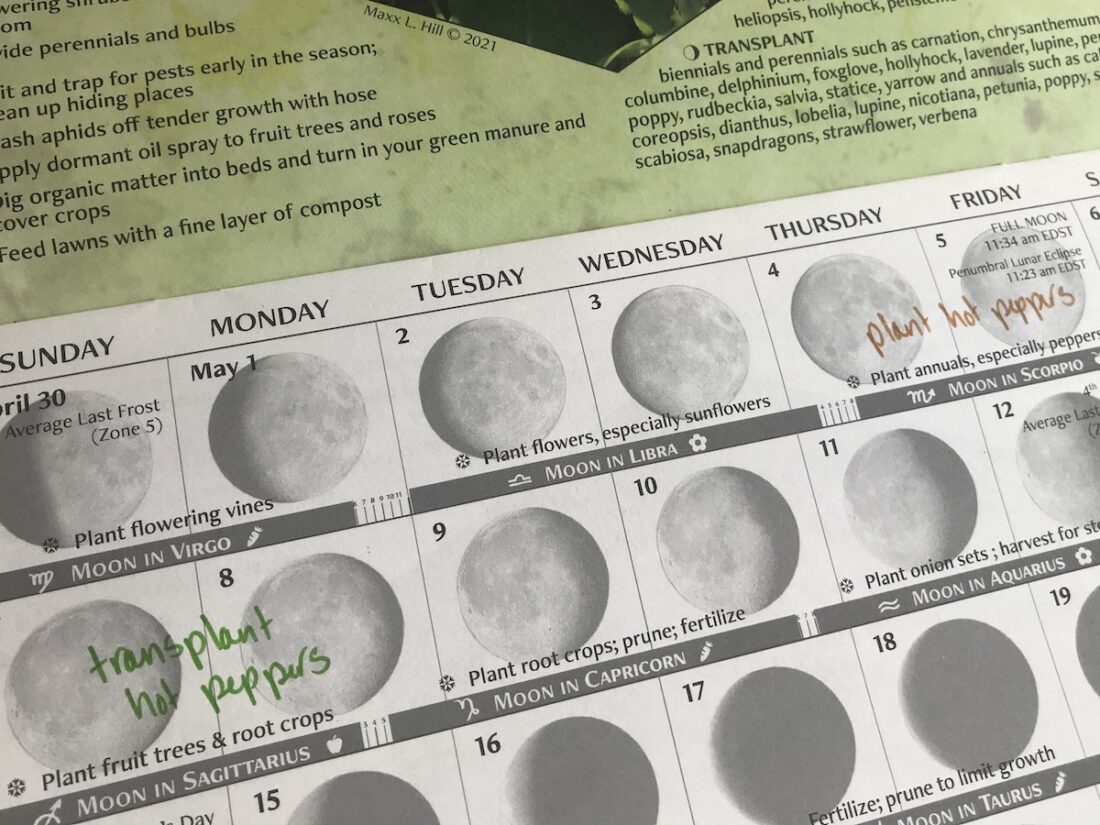How to Pick Planting Days

Getting the new Gardening by the Moon calendar in the mail each year is always exciting, but the next step—picking planting dates—can be a little intimidating. The interplay of lunar phase, zodiac sign, and seasonal weather is complex, and it can be hard to know where to jump in.
Finding Your Best Planting Days by the Signs and Phases of the Moon
For my own garden, I like to start with the least predictable of those variables—the weather.
First I look up my average frost dates by zipcode. There are different places to do this, and they may each give slightly different results—depending on how many and which years they use to calculate the averages—so I go to a few websites and see where they agree. My personal favorite site is Dave’s Garden, which has the most specific information.
If that’s too complicated, you can use the average frost dates by zone printed in the calendar. This isn’t quite as accurate, but it’s enough to be useful. (Frost dates are always a guess, never a promise.)
If you really want to fine tune things here, you can look at a long range forecast such as the one available from the Old Farmer’s Almanac book or website.
This is also a good time to consider your microclimate—are you on a northern or southern slope? Near pine forests or parking lots? All of these things can cool or warm the soil—or even create a tiny microclimate within your larger garden or farm.
Now that I know where in the wheel of the year I’ll be planting (usually February or March until May or June, with another round later on in the summer), it’s time to look at specific dates and their phases and signs. In my research for this calendar I found people who give more creedence to phase and others who favor the signs. I prefer to take it all into account, but of course the optimal combination doesn’t always occur at the correct time for planting.
I keep my seeds packets on hand when I’m determining planting dates, as they often list 1) days from planting to germination and 2) days from germination (or transplant) to harvest. I go through the stack one variety at a time.
Some plants, like peas, want to be planted as soon as the soil can be worked—they’re frost hardy and will even shake off a light snow without too much trouble. But in my garden, they yellow and stop producing after midsummer when the heat hits.
Others, like hot peppers, need warmth to germinate, so I count backwards from my educated-guess-first-frost-date and plant as late as possible to give the soil a chance to warm up.
Depending on the length of time to harvest, I may need to start the seeds inside under lights to ensure the plants have enough days to grow to maturity before the weather cools again.
Next I look at lunar phase. For this example I’ll be finding planting dates for snap peas and hot peppers, using the Short Season calendar for 2023.
Because both peas and peppers do best planted in the second quarter (both hold their seeds inside), I start by finding the second quarter about eight or nine weeks before my last frost date—this is coincidentally a good time to start sowing peas outside and planting peppers in starts inside.
Some people advocate planting peas in succession, and I have tried it, but where I live it goes from very cold to pretty hot in a short amount of time, and I’ve found that the later plantings of peas never did very well, so I don’t do it much these days.
If you live somewhere with a more gradual spring warm-up, you may find that succession planting peas works better for you. In this case, look for a range of planting dates starting nine or so weeks before last frost and continuing every 1-2 weeks until the weather warms up.
My average last frost is April 28, so eight to nine weeks ahead gives me the last week of February and the first one of March.
Thirdly I consider the astrological signs. This year the second quarter falls in both the first and last week of March, each with 2-3 days of the moon in Cancer, which is the best planting sign for peas. Fantastic! I may try succession planting this year after all.
Cancer is fruitful enough to plant anything, so I’ll go ahead and start some pepper seeds then for transplanting around the middle of May, but I also flip ahead in the calendar to see the next time Scorpio comes into the second quarter—Scorpio and Sagittarius being particularly good for peppers—which I see is May 4, the day before the full moon, which is just about late enough for me to sow peppers directly, especially if I have a short-season variety and/or I use row covers or cold frames to protect my seeds.
My house is pretty cold and drafty and my pepper seedlings don’t always germinate or grow very quickly, so I don’t want to put all my eggs in one basket!
I hope this has been helpful to you and you’re able to apply my example to your own climate and garden. If you’d like to learn more about lunar planting, check out the other resources in top navigation bar. If you’d like to learn more about the calendar, click here or visit our shop to purchase your own.






